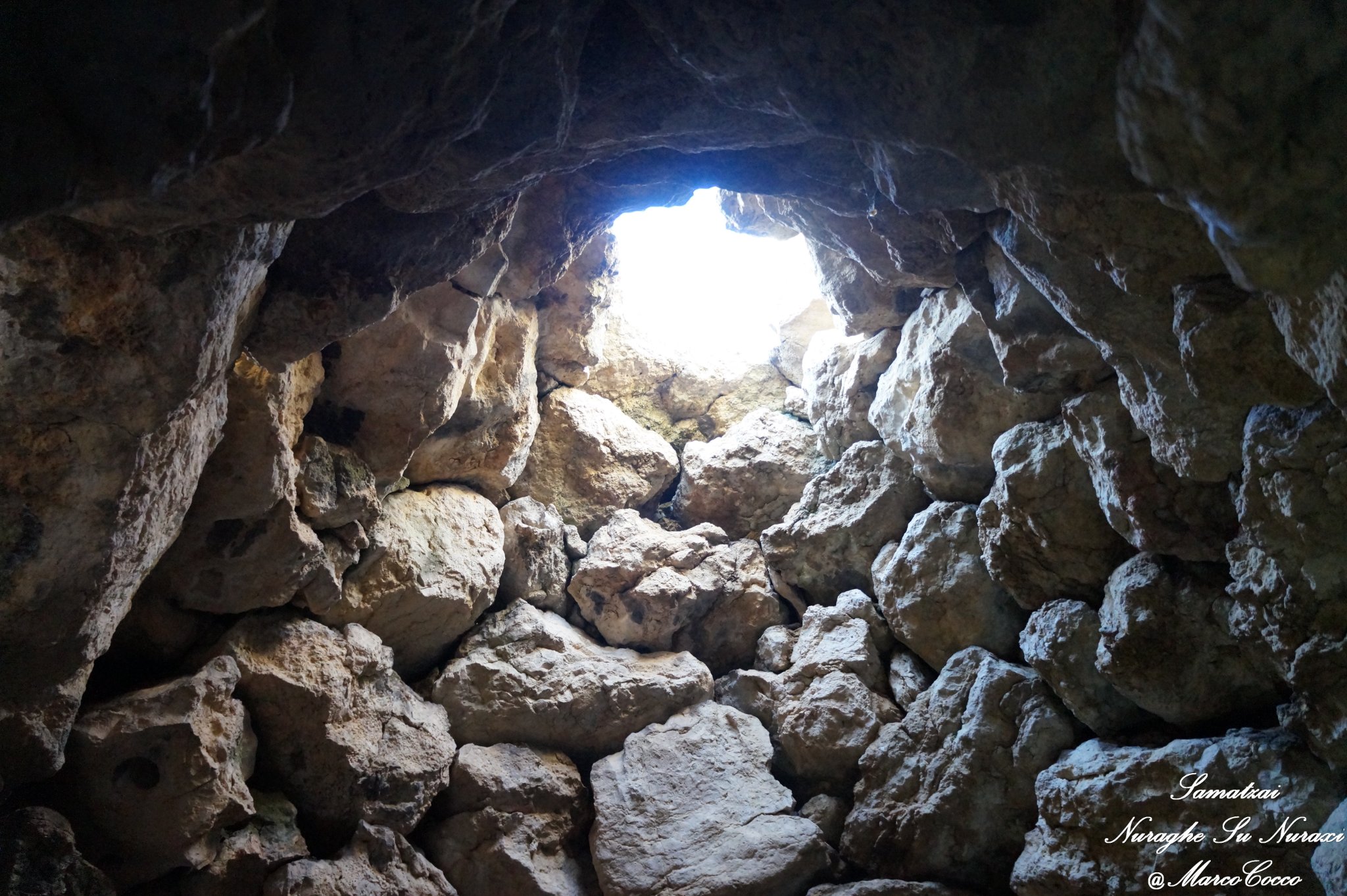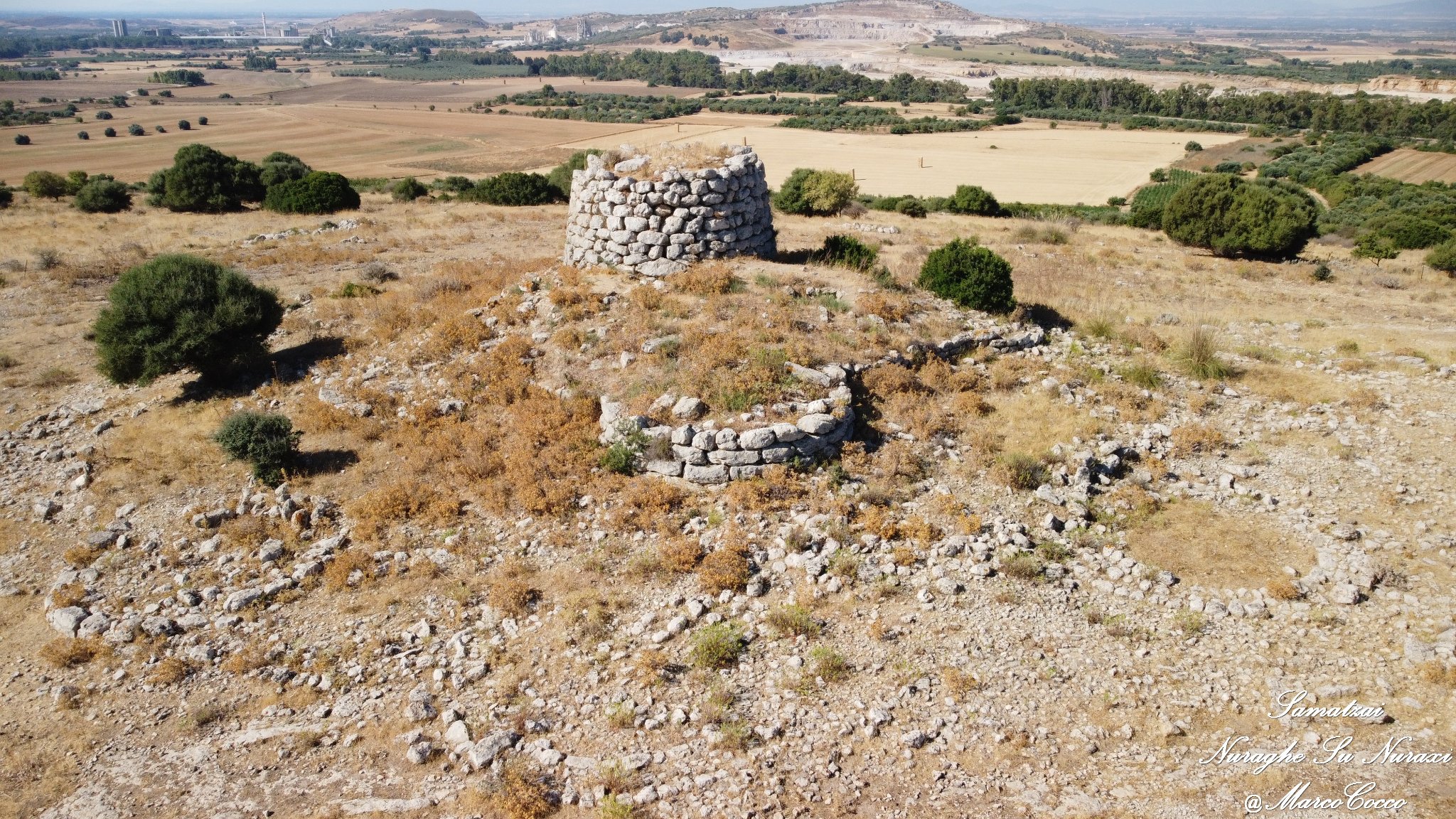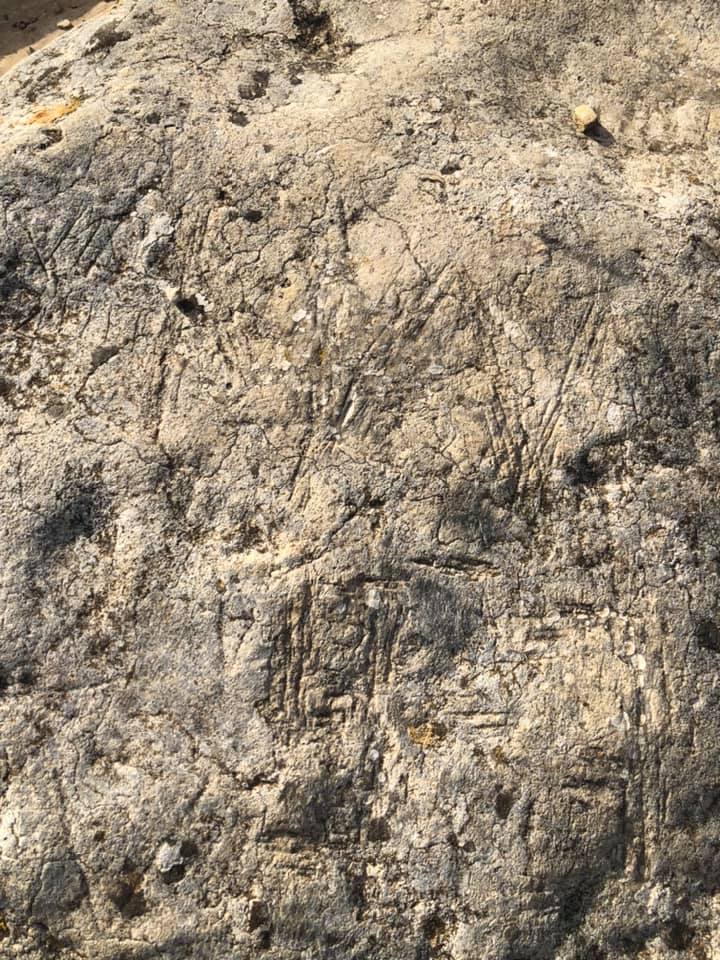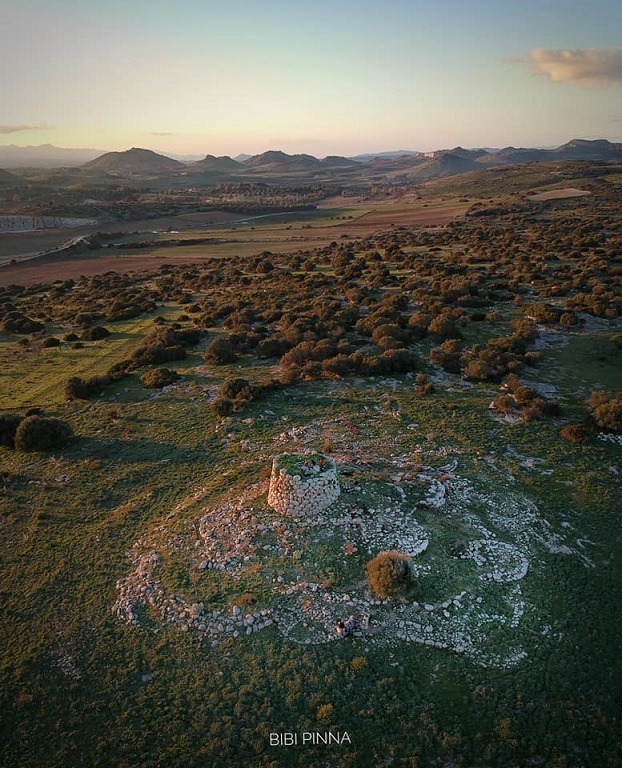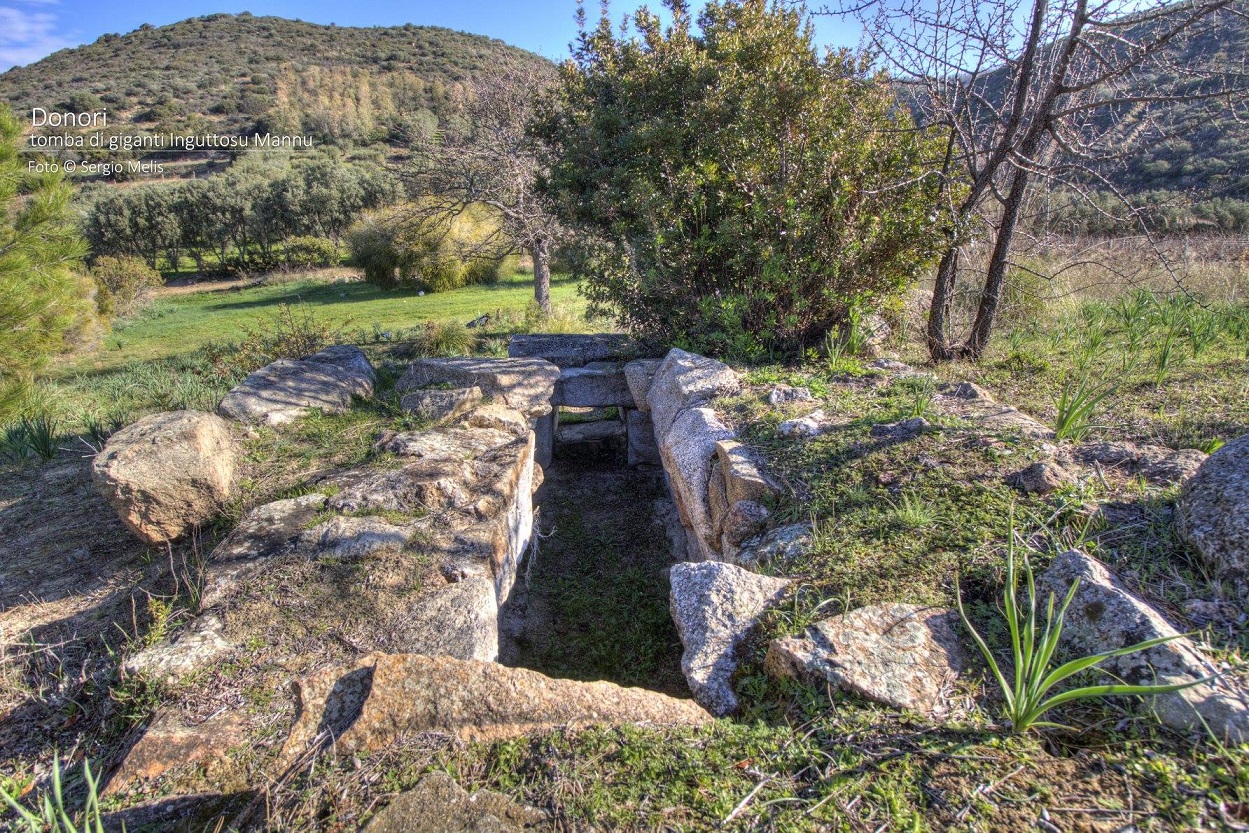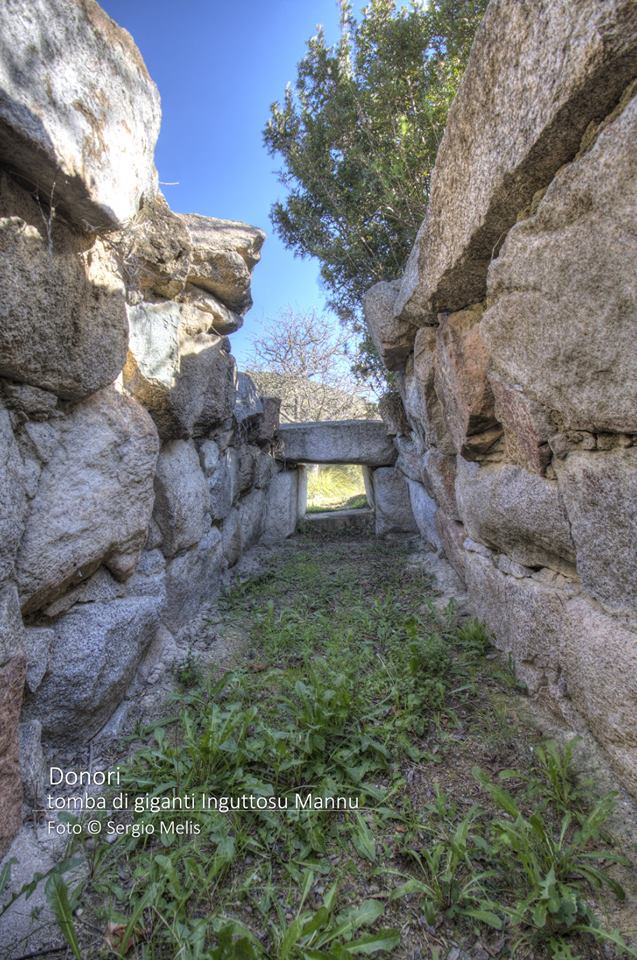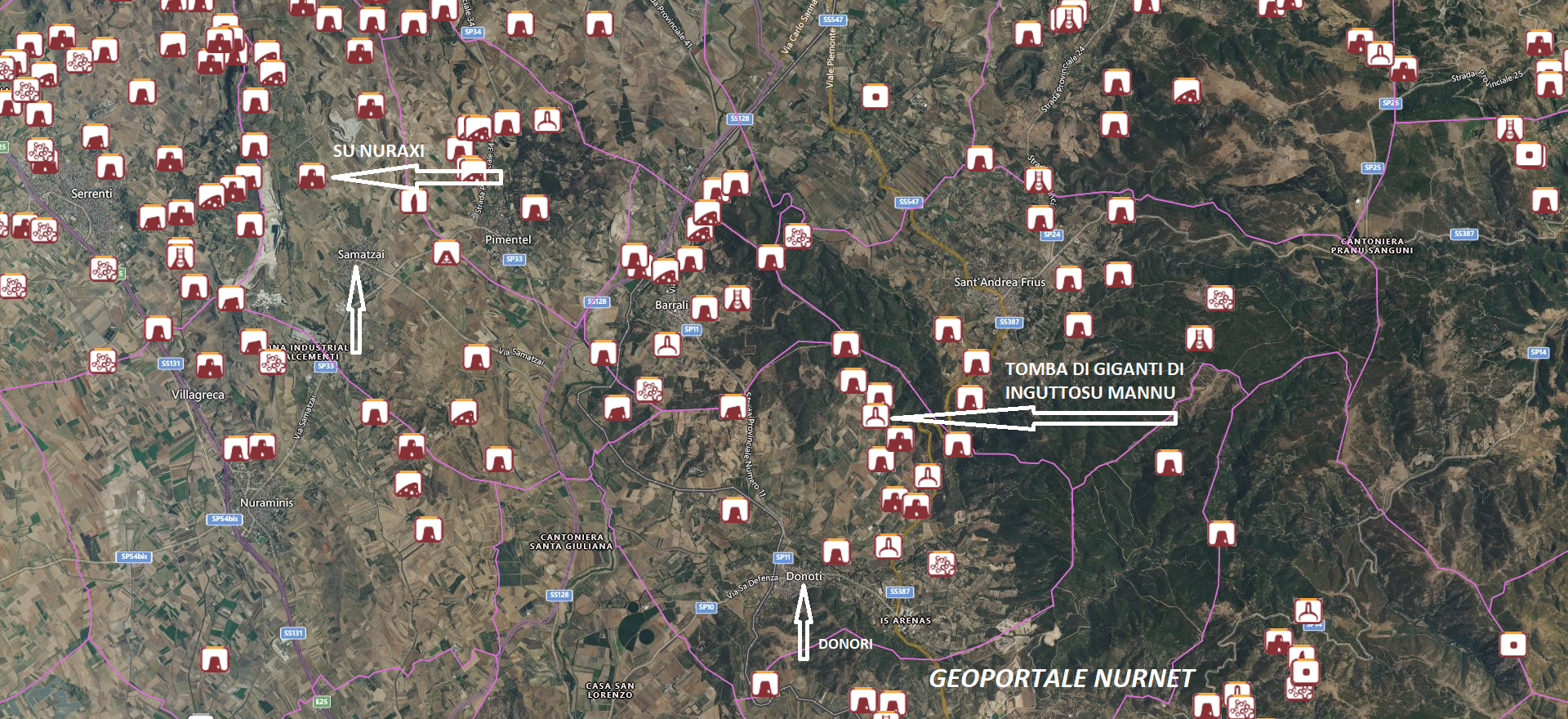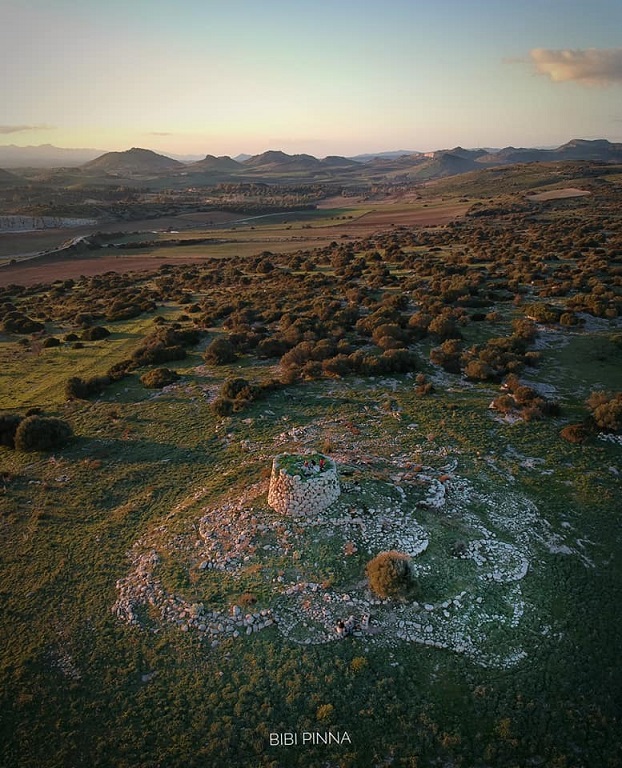100.2 and 100 a.2: Excluding the main tower, the nuraghe “Su Nuraxi” of Samatzai “is largely buried, making it difficult to read the parts that compose it. In the space around the nuraghe, the presence of some circular rooms is noted, perhaps remains of a village. Also in its vicinity, there is what could be a sacrificial area, referred to by the people of Samatzai as “Sa piscedd’ ‘e su casu” due to its particular appearance resembling a form of cheese.” (from Suscruxoxu.it)
The tomb of the giants of “Inguttosu Mannu” or “Ingurtosu Mannu”, in Donori, reveals itself to visitors in its original forms. Resting directly on the rocky outcrop, it consists of an apsidal corridor set on an exedra equipped with a narrow bench. At the center of the exedra, a small lintelled entrance, equipped with jambs and threshold, leads into the funerary chamber, a corridor made up of rows of large, roughly hewn blocks filled with small stones. The covering is a pointed vault. Traces of the retaining wall testify that it was originally covered by a tumulus of stones and earth. (Wikipedia)
The photos of Su Nuraxi of Samatzai are by: Lucia Corda, Marco Cocco, Bibi Pinna, Gianni Sirigu, Lorenzo Muntoni, Ivan Pedretti, and Ugo Pilia. Those of the Tomb of giants of Inguttosu Mannu, in Donori, are by: Sergio Melis, Bibi Pinna, and Francesca Cossu.






